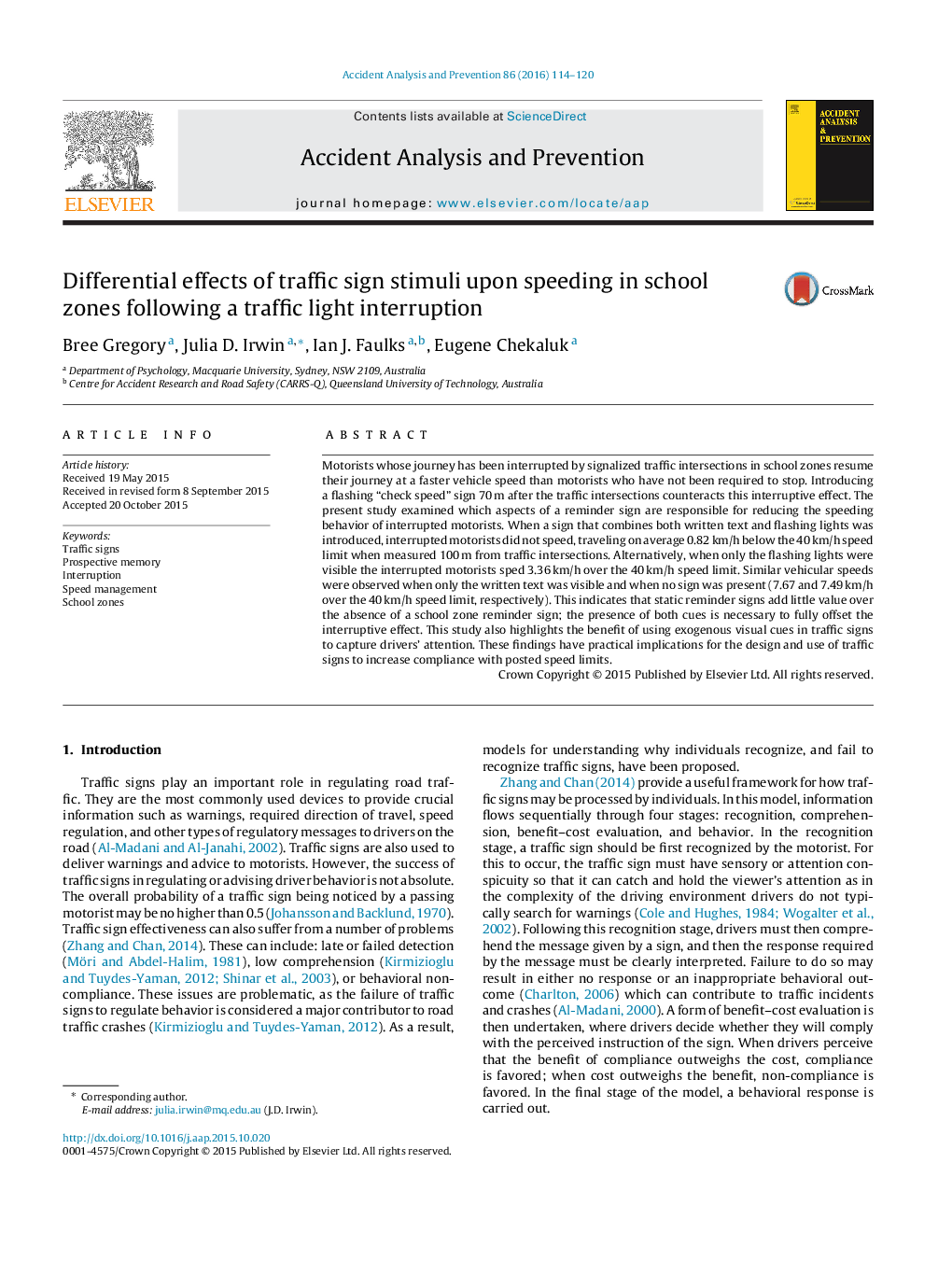| کد مقاله | کد نشریه | سال انتشار | مقاله انگلیسی | نسخه تمام متن |
|---|---|---|---|---|
| 6965413 | 1452911 | 2016 | 7 صفحه PDF | دانلود رایگان |
عنوان انگلیسی مقاله ISI
Differential effects of traffic sign stimuli upon speeding in school zones following a traffic light interruption
ترجمه فارسی عنوان
اثرات افتراق محرک های نشانه گذار بر سرعت بخشیدن به مناطق مدرسه به علت وقفه ناگهانی ترافیک
دانلود مقاله + سفارش ترجمه
دانلود مقاله ISI انگلیسی
رایگان برای ایرانیان
کلمات کلیدی
علائم رانندگی، حافظه احتمالی، وقفه، مدیریت سرعت، مناطق مدرسه،
موضوعات مرتبط
مهندسی و علوم پایه
مهندسی شیمی
بهداشت و امنیت شیمی
چکیده انگلیسی
Motorists whose journey has been interrupted by signalized traffic intersections in school zones resume their journey at a faster vehicle speed than motorists who have not been required to stop. Introducing a flashing “check speed” sign 70Â m after the traffic intersections counteracts this interruptive effect. The present study examined which aspects of a reminder sign are responsible for reducing the speeding behavior of interrupted motorists. When a sign that combines both written text and flashing lights was introduced, interrupted motorists did not speed, traveling on average 0.82Â km/h below the 40Â km/h speed limit when measured 100Â m from traffic intersections. Alternatively, when only the flashing lights were visible the interrupted motorists sped 3.36Â km/h over the 40Â km/h speed limit. Similar vehicular speeds were observed when only the written text was visible and when no sign was present (7.67 and 7.49Â km/h over the 40Â km/h speed limit, respectively). This indicates that static reminder signs add little value over the absence of a school zone reminder sign; the presence of both cues is necessary to fully offset the interruptive effect. This study also highlights the benefit of using exogenous visual cues in traffic signs to capture drivers' attention. These findings have practical implications for the design and use of traffic signs to increase compliance with posted speed limits.
ناشر
Database: Elsevier - ScienceDirect (ساینس دایرکت)
Journal: Accident Analysis & Prevention - Volume 86, January 2016, Pages 114-120
Journal: Accident Analysis & Prevention - Volume 86, January 2016, Pages 114-120
نویسندگان
Bree Gregory, Julia D. Irwin, Ian J. Faulks, Eugene Chekaluk,
